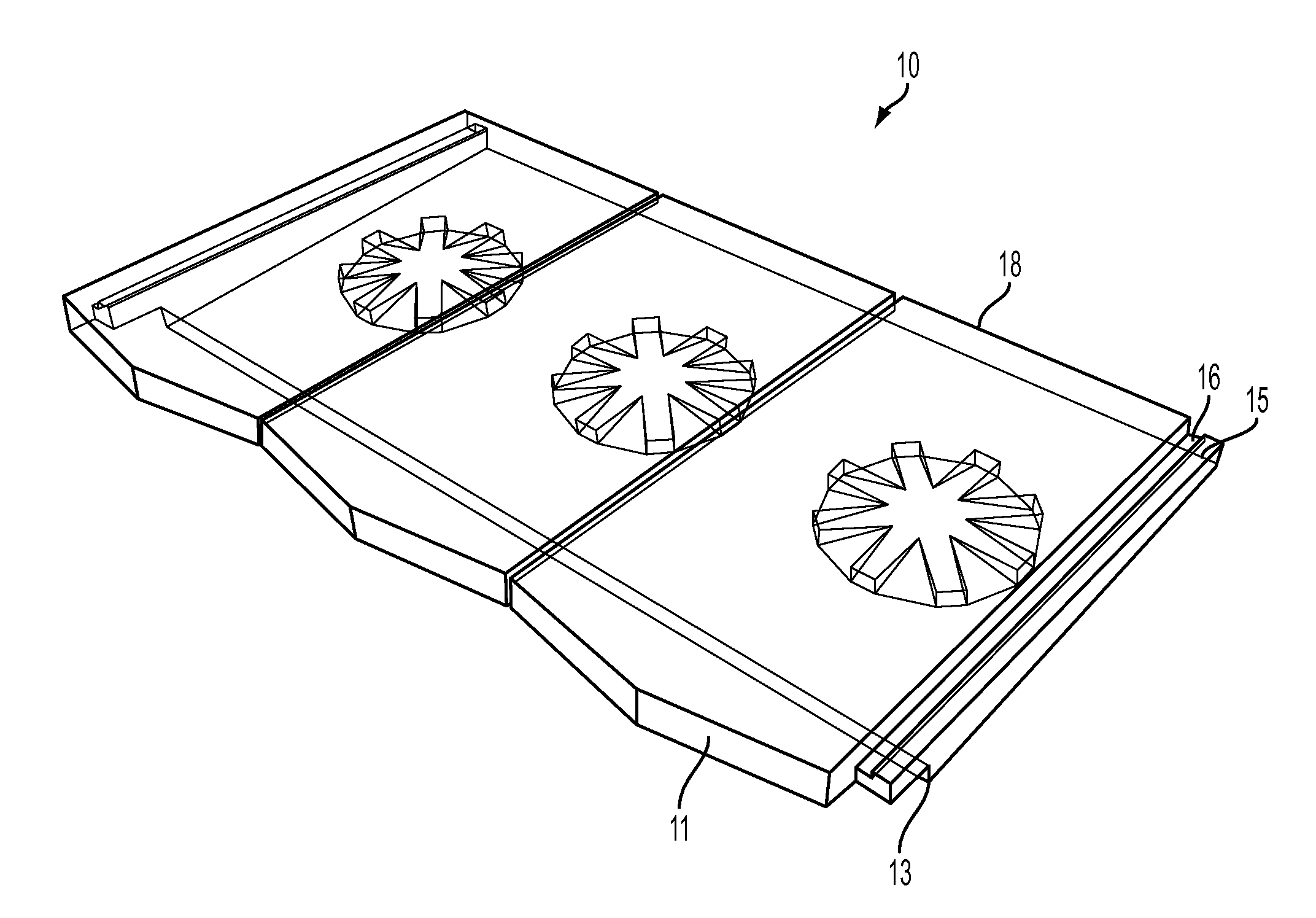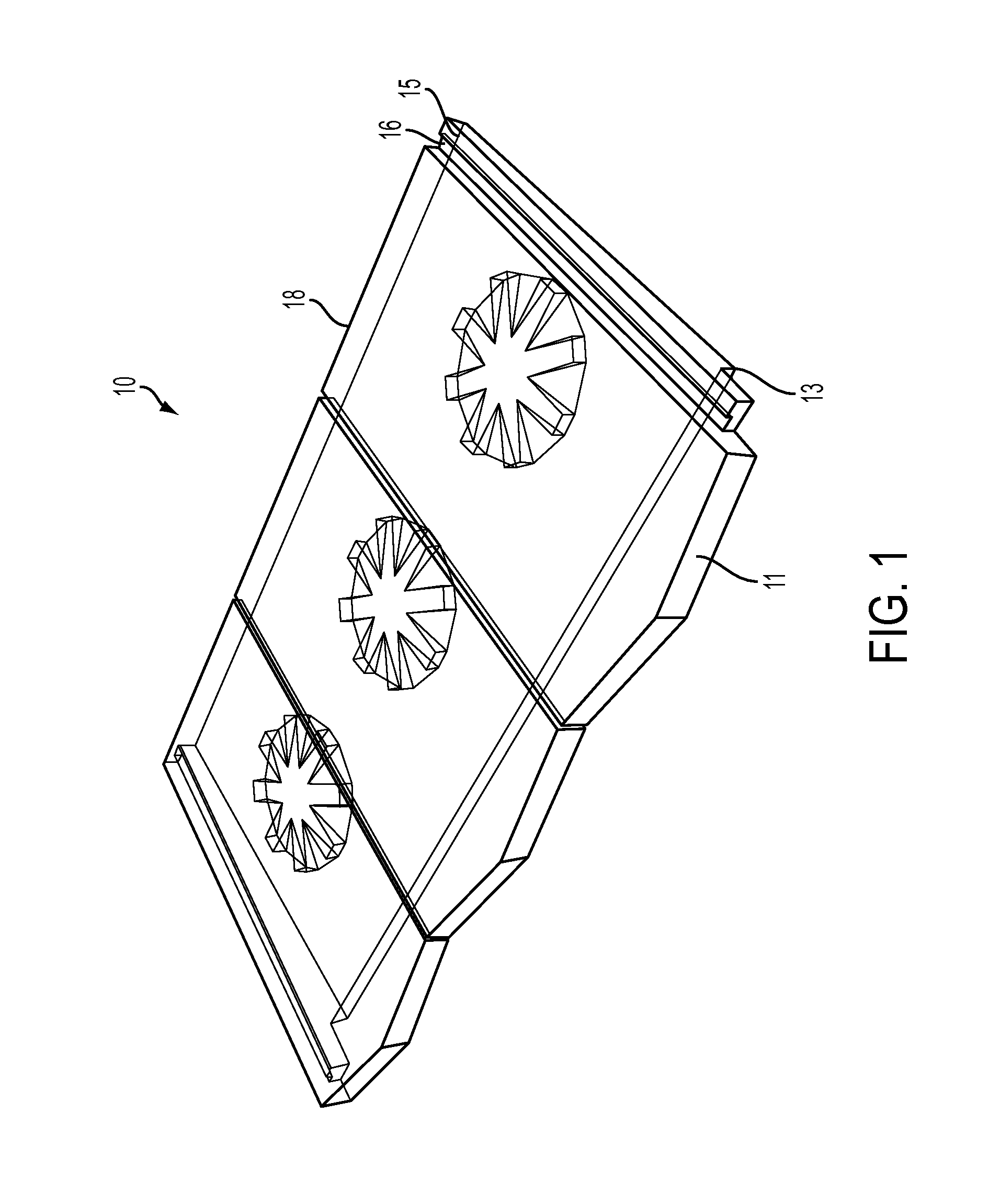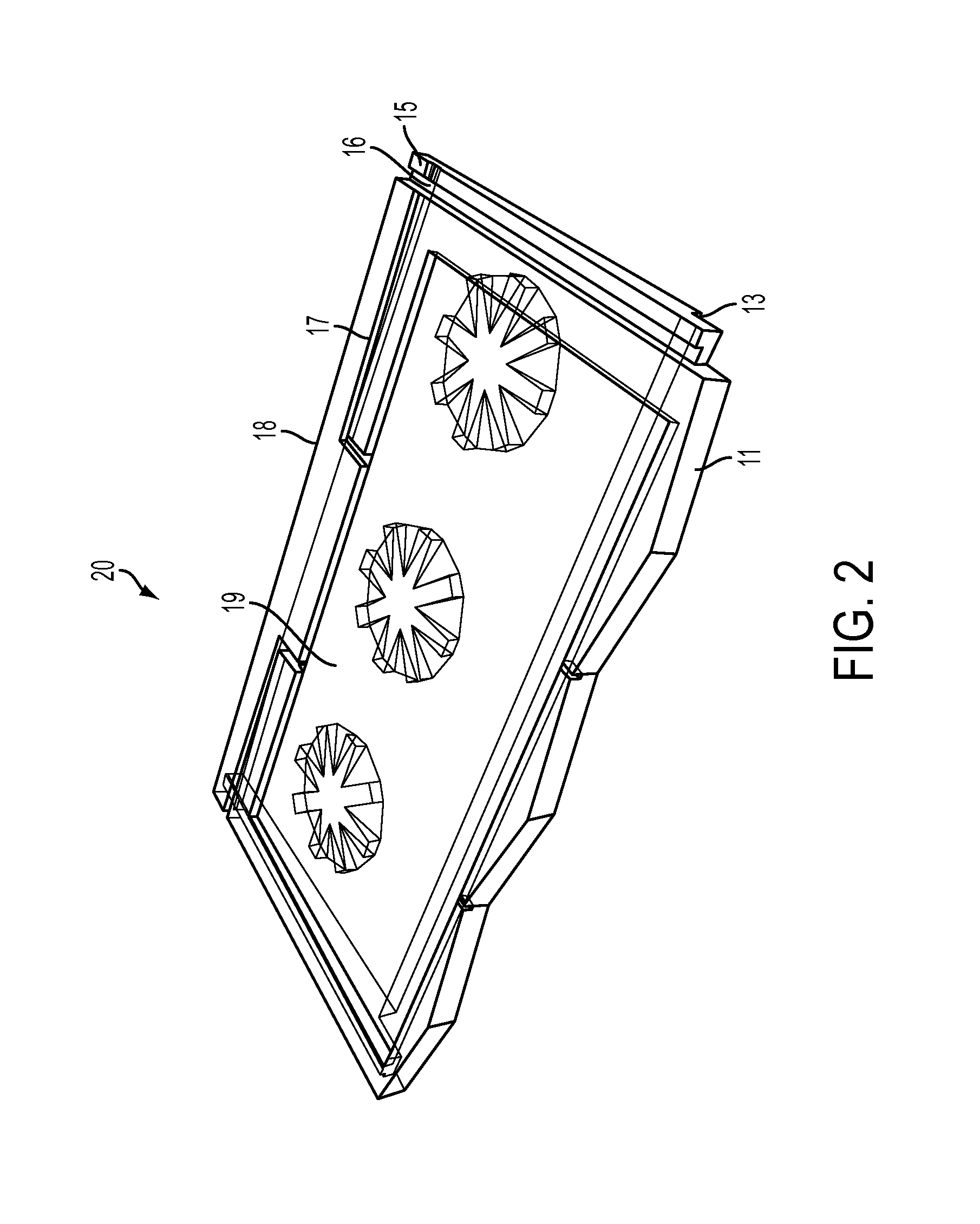Light weight molded roof tile with integrated solar capabilities
- Summary
- Abstract
- Description
- Claims
- Application Information
AI Technical Summary
Benefits of technology
Problems solved by technology
Method used
Image
Examples
Embodiment Construction
[0052]Referring now to the drawings and in particular FIG. 1, a molded tri-field tile 10 is shown from a polyurethane material preferably polymeric isocyanate and a water-based (HCFC-2455fa) blown component.
[0053]The tile 10 has an outer layer of a 100% solid aliphatic polyurea material, and in addition ultraviolet ray protectors. The tile 10 also has a second inner layer or sub-layer that is a unique 100% solid intumescent mixture based on a non-halogenated phosphate creating a solid epoxy sub-layer. The inner layer provides a fire blocking barrier to protect the polyurethane foam body of the tile from fire. The entire exterior surface of the tile 10 is not covered with the fire retardant and blocking fire layers. The tile bottom surface which includes a recessed portion explained below does not receive the fire retardant and fire blocking outer and inner layers coatings.
[0054]The length of the tri-field tile 10 is three times longer than a single tile. The tri-field tile 10 includ...
PUM
| Property | Measurement | Unit |
|---|---|---|
| Fraction | aaaaa | aaaaa |
| Fraction | aaaaa | aaaaa |
| Length | aaaaa | aaaaa |
Abstract
Description
Claims
Application Information
 Login to View More
Login to View More - R&D
- Intellectual Property
- Life Sciences
- Materials
- Tech Scout
- Unparalleled Data Quality
- Higher Quality Content
- 60% Fewer Hallucinations
Browse by: Latest US Patents, China's latest patents, Technical Efficacy Thesaurus, Application Domain, Technology Topic, Popular Technical Reports.
© 2025 PatSnap. All rights reserved.Legal|Privacy policy|Modern Slavery Act Transparency Statement|Sitemap|About US| Contact US: help@patsnap.com



